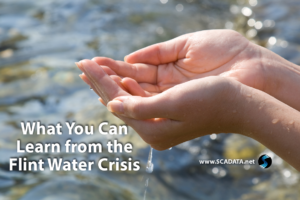When you choose to implement a SCADA system, you are on the line for ensuring that compliance standards are met. But before you can do that, you need to know what the standards are when it comes to water quality.
The right to know about your water quality
The water supply is a community-wide health issue. When there is negligence or oversight, it could mean life or death. This, of course, is not to be taken lightly. That�s why agencies like the EPA (Environmental Protection Agency) provide oversight and regulation of such resources as our water supply. Consumers have a right to know how their water is processed so that they can make informed choices about their drinking water. If you are overseeing a water management facility, you must make sure that you are providing accurate and timely information.
Legislation and safe water
Legislation is one way the government, the EPA in particular, protects the public interest. For example, the 1996 amendments to the Safe Drinking Water Act (SDWA) addressed pollution prevention, affirming the traditional treatment approach to ensuring safe drinking water. Specifically, the amendments required states to develop Source Water Assessment Programs (SWAPs) and submit them to the EPA for approval by February of 1999.
To that end, each community water system (CWS) is required to provide an annual water quality report to its customers. This annual water quality report is also called a Consumer Confidence Report (CCR). This document includes vital information, such as the drinking water source, any monitored found contaminants, and whether a CWS meets state and federal drinking water standards. Although not required, it is a good idea to tell customers whether their water meets all drinking water quality standards. Check here to find your local water CCR.
This report is a standard requirement for most utilities. The EPA requires that every community water system (serving at least 15 service connections and/or 25 people year round) prepare and distribute such a report. For example, cities, towns, homeowners associations, residential subdivisions, and manufactured housing communities all fall under the auspices of such a system.
Connecting with customers
The CCR is more than just an annual requirement. It provides an avenue for engagement, too. Put simply, the CCR is a regular opportunity for CWSs to communicate with their customers and educate them about their drinking water. CCRs also contain information that allows customers to make better decisions about their health. A CWS must deliver its CCR to customers by July 1st of each year by standard mail or via an electronic means. Systems that have a significant population of non-English speaking residents are required to include information in the appropriate language(s).
One objective of the factsheet is to help CWSs design CCRs that better educate customers about their drinking water. An effective CCR can help an entity educate its customers about water quality and encourage them to be stakeholders in protecting their drinking water.



